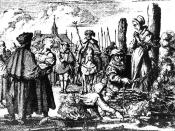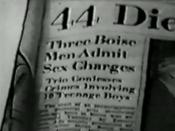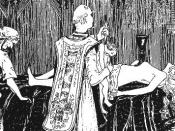Moral panic was a term explored by Stanley Cohen in the early 70's and is defined as a condition, episode, person or a group of people who are portrayed as a threat to societal values and interests, its nature is presented in a stylized and stereotypical fashion by the mass media. (Cohen, 1973, p.9)It is a reaction by a group of people based on exaggerated information that some certain youth cultures are a threat to society.
These moral panics are mostly fuelled by media coverage who generally exaggerate and sensualise situations, which then can cause mass hysteria and panic within the public.
Youth culture is one of the most popular types of moral panic, whose behaviour is seen as deviant, delinquent and immoral. These cultures are usually associated with violence, vandalism and drug taking. Such youth cultures have involved the Mods and Rockers, Teddy Boys, Skinheads, Hells Angels and Hippies.
The Mods and Rockers are a great example of moral panic and this is what Stanley Cohen based his study on. The disturbances that occurred in Clacton on Easter Monday 1964 showed how the media coverage blew the situation out of proportion and created mass hysteria and panic. What started off to be small scale crime, the media portrayed it to be an invasion and a mob 'hell-bent' on destruction. This then increased the amount of police who intervened more strongly, therefore resulting in more arrests. There were headlines in every national newspaper, stating huts were vandalised, windows broken and there were numerous arrests. These facts were distorted and made out to be a much more violent occurrence than it actually was. This was found after numerous people were spoken to who had attended this event and made their comments about what actually did occur. The press coverage followed what...


